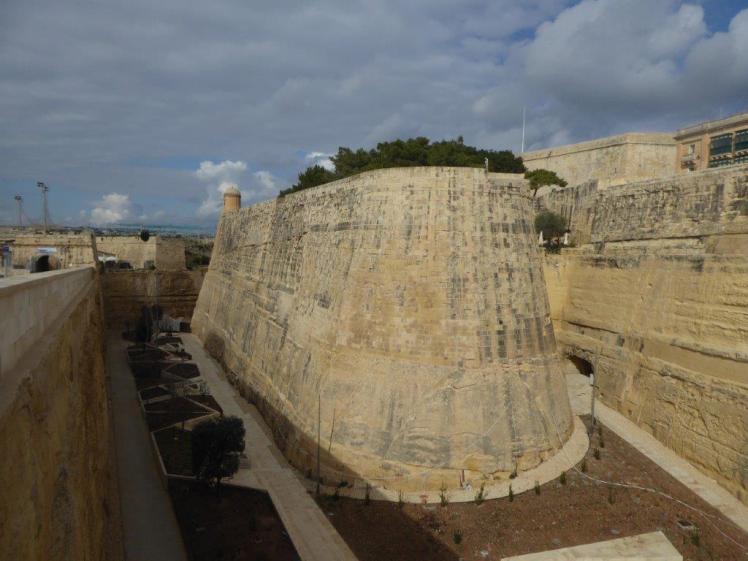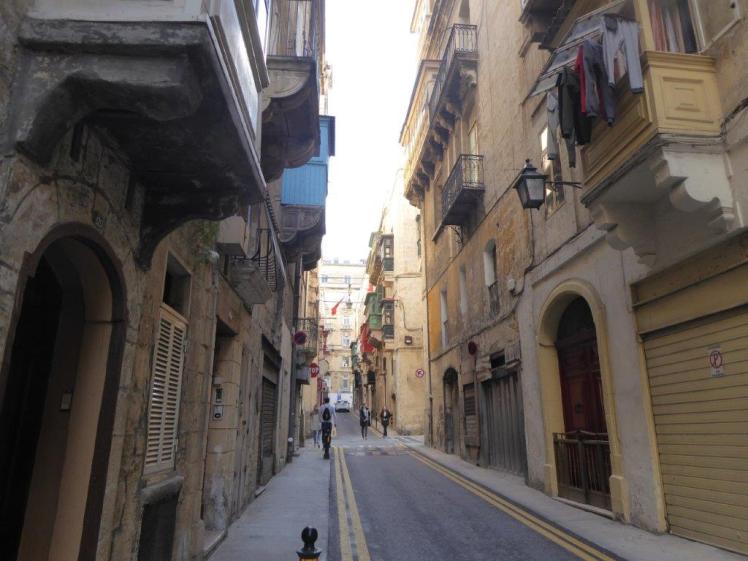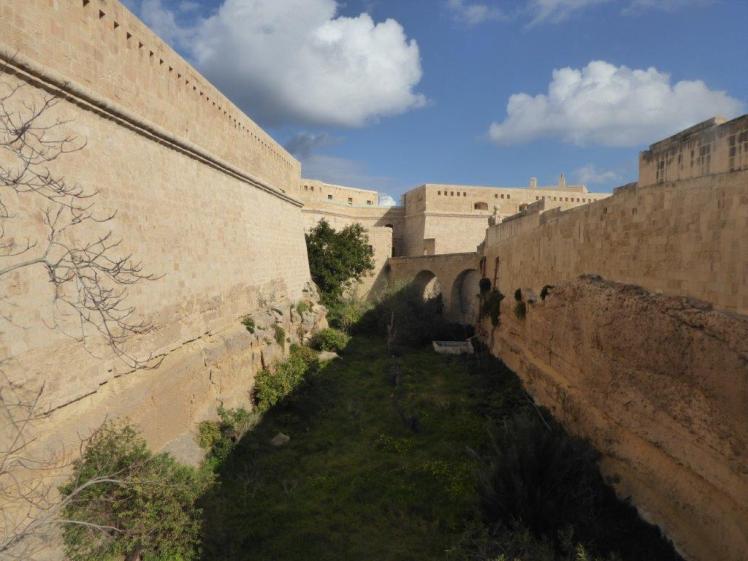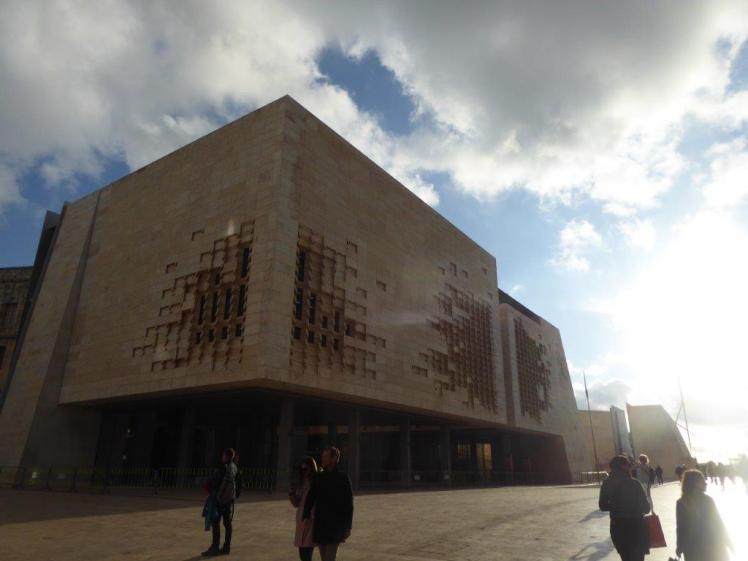I didn’t know a lot about Malta before I went there. I didn’t even know what town my hostel was in – I now know it’s officially Marsa but it seems to be at the crossroads of every town I’ve ever heard of and a few I haven’t. Everyone at work knows Malta pretty well – most of them have stayed at the flat we used to own – and they all wanted to know where I was staying. In the end I resorted to “I don’t know – I know exactly where it is but I don’t know what it’s… kind of Valletta, I guess?”
And then I took the bus ten minutes up the road and discovered it absolutely wasn’t in Valletta.
Valletta is a walled city. At least, the landward side is walled, not to mention the giant ditch just waiting to be flooded and turned into a moat. On the seaward sides – for Valletta is on a peninsula – it has more walls which are backed up by forts both in Valletta and opposite on the other side of the harbour. You’re either in Valletta or you’re not, there’s no “kind of…” about it.

Valletta was mostly too hot for me. It has narrow streets lined with tall buildings which keep the worst of the sun off and that’s nice but once you’re out of the maze and heading north to Fort St Elmo, suddenly there’s nowhere to hide.


I’m interested in seeing forts. I’m less interested in museums and since the Corsairs don’t attack Malta very often anymore, most of its forts now house museums. I was interested to see that Fort St Elmo on the west side and Fort St Angelo on the east side more or less block entry to the Grand Harbour, partly by the long causeway leading from Elmo to a lighthouse. And a lot of buildings that I took to be forts wee actually hospitals – sometimes in a life after being a fort, admittedly, and mostly they don’t serve that purpose anymore. Malta used to be the Nurse of the Mediterranean, mostly a military nurse. Soldiers from the Crusades used to be brought here for help and I’m pretty sure soldiers from modern conflicts were/are brought here before being delivered home, either for treatment or because Malta’s a little bit of a human parcel sorting hub.


I missed St John’s Co-Cathedral – it closes at lunchtimes on Saturdays and I didn’t find it until late afternoon. It’s distinctly underwhelming from the outside but I understand it’s great inside.
I enjoyed the boat trip over to Sliema, although Sliema itself struck me as hugely “British high street in the sun”, which didn’t appeal. M&S, Burger King, Mothercare, Topshop, plus a lot of tower blocks. Valletta also had a lot of those shops but at least it had put them in a more Maltese setting. I sailed back.

I imagine Valletta hasn’t changed a lot in several centuries. No tower blocks here, no blue glass, no Grand Designs. Valletta is all yellow limestone and although I’ve never been to Lebanon (and neither has she), my boss’s mum probably isn’t far off when she describes Malta as “it’s like bloody Beirut”. It looks quite a bit like Cyprus. It looks a bit like southern Italy. Most likely, it just looks Mediterranean.

Things that definitely have changed: I don’t think there was a land train bumbling around in La Valette’s day, nor do I think there were many little electric buggy-buses. The horses and carts probably were
The new shiny modern Parliament building wasn’t. I don’t know about the Royal Opera House, whose bombed-out ruins now frame the Royal Theatre open-air performance space. And yes, City Gate has been reconstructed. But other than that, I think he’d recognise his city.


Especially given the heat – how can it be so hot in January? – I quite liked Valletta. If I ever go back to Malta, I want to cross off the cathedral, maybe see a play in the starlight but mostly there’s so much more of Malta I need to see for the first time that Valletta for the second time may have to wait.